- Introducing Instagram-Worthy Photos of Southern Kyoto, Western Kyoto, and Amanohashidate
- Fushimi Inari Taisha
- Byodoin Temple
- Koshoji Temple
- Mimurotoji Temple
- Iwashimizu Hachimangu Shrine
- Ujigami Shrine
- Tofukuji Temple
- Daigoji Temple
- Cormorant Fishing on the Uji River
- Teradaya
- Kinkakuji Temple
- Arashiyama
- Horinji Temple
- Tenryuji Temple
- Jojakkoji Temple
- Ryoanji Temple
- Ninnaji Temple
- Bamboo Grove Path
- Kimono Forest
- Amanohashidate
- Amanohashidate View Land
- Amanohashidate Shrine
- Ine’s Funaya Houses
Introducing Instagram-Worthy Photos of Southern Kyoto, Western Kyoto, and Amanohashidate
Southern Kyoto features attractions like Fushimi Inari Taisha, Byodoin, Daigoji, and Ujigami Shrine. In the Western area, you’ll find the World Heritage Site Kinkakuji, the iconic Togetsukyo Bridge of Arashiyama, and Horinji Temple’s Dendengu, the god of IT. Additionally, in the northern suburbs, there’s Amanohashidate, one of Japan’s three most scenic views, and the picturesque Funaya houses in Ine.
Fushimi Inari Taisha
Fushimi Inari Taisha is the central shrine among approximately 30,000 Inari shrines nationwide, cherished since its founding in 711 for blessings on business prosperity and household safety. It is particularly famous for the “Senbon Torii” (Thousand Torii Gates), creating a fantastical tunnel of vermilion gates, attracting many international visitors. Statues of foxes, considered messengers of the Inari deity, can be found throughout the shrine, holding various items in their mouths. There is also a spiritual spot called “Omokaru Ishi” where visitors can wish for their dreams to come true.
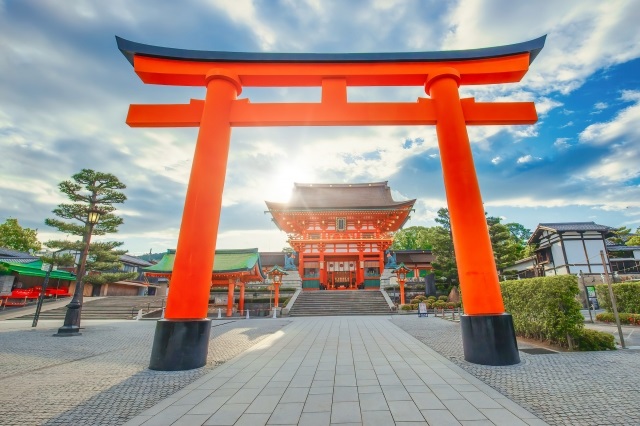
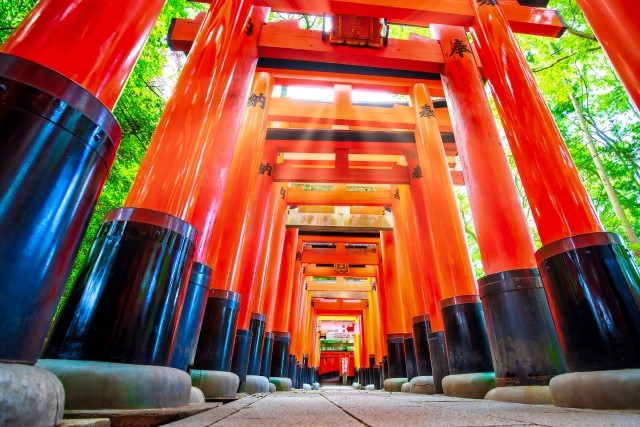
Instagram Worthiness:★★★★★
Photography Opportunity: All seasons
Location Information: ▶Map, Hours, Routes
Transportation Information: 1-minute walk from Inari Station
Byodoin Temple
Byodoin, a UNESCO World Heritage Site, was established by Fujiwara no Yorimichi in 1052. The Phoenix Hall, a national treasure, is featured on the 10-yen coin and the 10,000-yen bill, making it one of Kyoto’s most iconic spots, drawing over a million visitors annually.
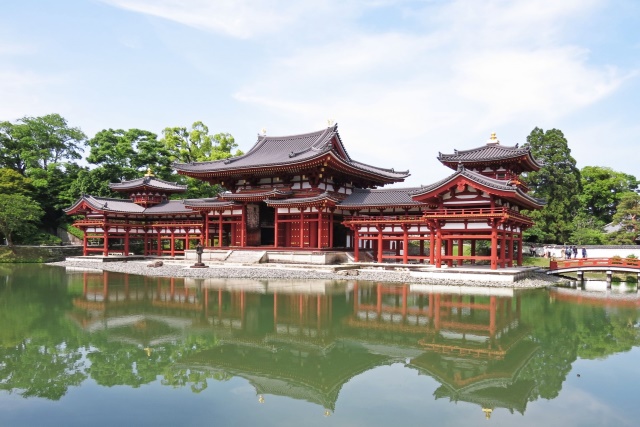
Instagram Worthiness:★★★★★
Photography Opportunity: All seasons
Location Information: ▶Map, Hours, Routes
Transportation Information: 9-minute walk from Uji Station
Koshoji Temple
Koshoji is Japan’s first Soto Zen temple, founded in 1233 by Zen master Dogen. The “Kotozaka” path leading to the temple is a popular spot for cherry blossoms in spring and colorful foliage in autumn.
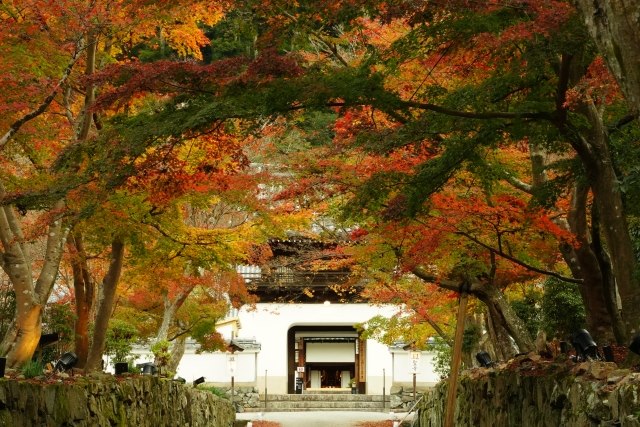
Instagram Worthiness:★★★★★
Photography Opportunity: All seasons
Location Information: ▶Map, Hours, Routes
Transportation Information: 20-minute walk from Uji Station
Mimurotoji Temple
Mimurotoji, a historic temple in Uji, was founded in 770. The current hall was rebuilt in 1814, and the temple is known for its extensive traditional Japanese gardens. It is called the “Temple of Flowers” due to its seasonal blooms: 20,000 azaleas and 1,000 rhododendrons in spring, 10,000 hydrangeas in early summer, and lotus flowers in July.
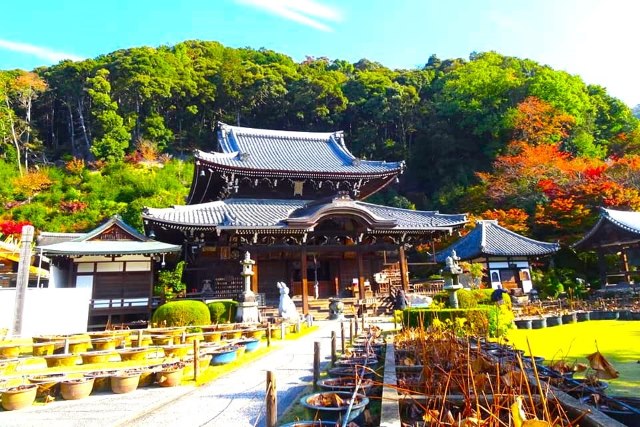
Instagram Worthiness:★★★★★
Photography Opportunity: All seasons
Location Information: ▶Map, Hours, Routes
Transportation Information: 8-minute bus ride from Uji Station
Iwashimizu Hachimangu Shrine
With a history of about 1,200 years, Iwashimizu Hachimangu Shrine has played a crucial role as a guardian of Kyoto and the nation, second only to Ise Shrine. It has been revered by the imperial court and commoners alike.
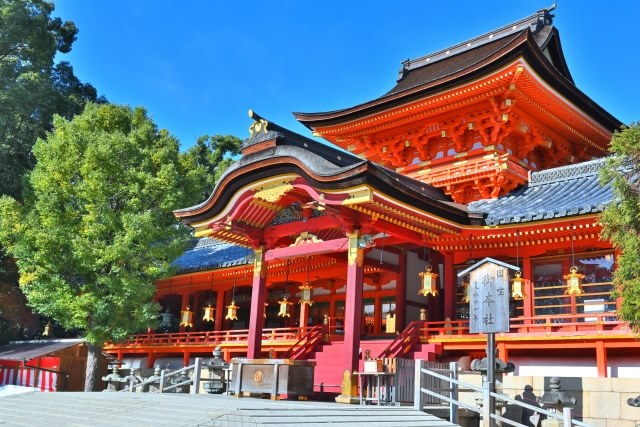
Instagram Worthiness:★★★★★
Photography Opportunity: All seasons
Location Information: ▶Map, Hours, Routes
Transportation Information: 33-minute walk from Hashimoto Station
Ujigami Shrine
Ujigami Shrine, considered one with nearby Uji Shrine, has Japan’s oldest existing shrine building, dating back to around 1060. It is closely associated with the establishment of Byodoin and is also a UNESCO World Heritage Site.
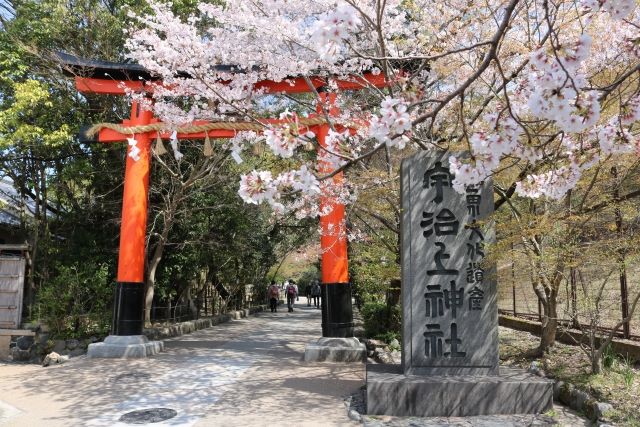
Instagram Worthiness:★★★★★
Photography Opportunity: All seasons
Location Information: ▶Map, Hours, Routes
Transportation Information: 17-minute walk from Uji Station
Tofukuji Temple
Founded during the Kamakura period in 1236 and completed over 19 years, Tofukuji’s main hall houses a Shakyamuni Buddha and was rebuilt in 1934. The view of approximately 2,000 maple trees from the Tsutenkyo Bridge is considered one of Kyoto’s most beautiful autumn scenes.
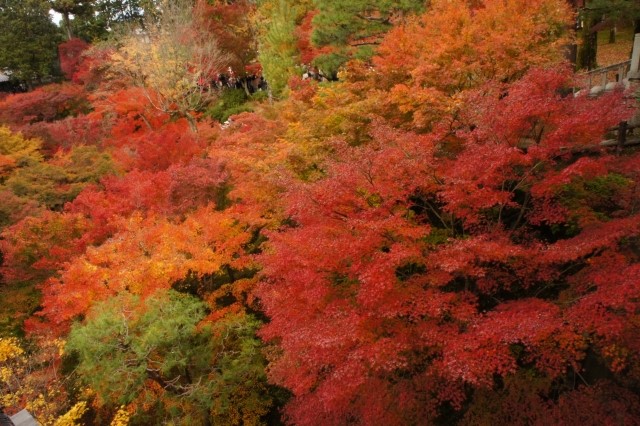
Instagram Worthiness:★★★★★
Photography Opportunity: Autumn
Location Information: ▶Map, Hours, Routes
Transportation Information: 7-minute walk from Tofukuji Station
Daigoji Temple
Registered as a World Heritage Site, Daigoji Temple, founded in 874, features Kyoto’s oldest five-story pagoda and numerous national treasures. It is renowned for its autumn foliage, particularly the reflection of the red leaves on the pond near Bentendo, a sight admired by visitors.
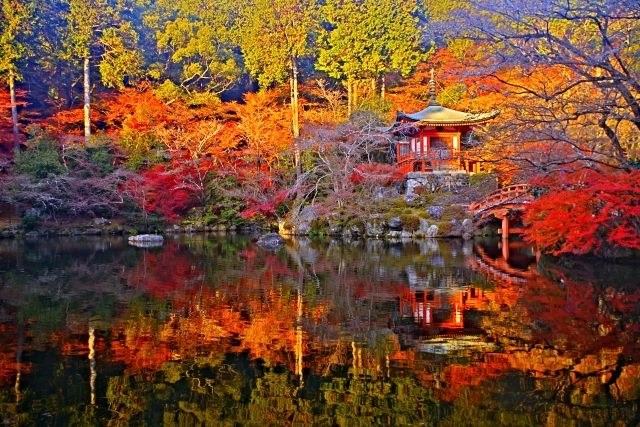
Instagram Worthiness:★★★★★
Photography Opportunity: Autumn
Location Information: ▶Map, Hours, Routes
Transportation Information: 21-minute bus ride from Yamashina Station
Cormorant Fishing on the Uji River
Cormorant fishing, a traditional method of catching fish using cormorants, is a spectacular sight on summer nights along the Uji River, illuminated by bonfires.
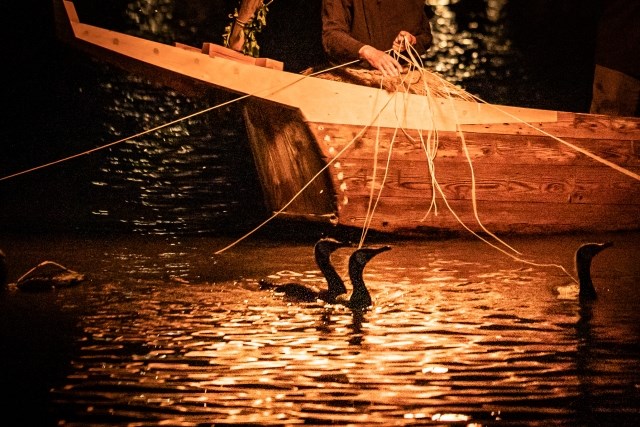
Instagram Worthiness:★★★★★
Photography Opportunity: Summer
Location Information: ▶Map, Hours, Routes
Transportation Information: 14-minute walk from Uji Station
Teradaya
Teradaya Inn, the site of significant historical events in 1862 and 1866 involving the Satsuma clan and the renowned figure Sakamoto Ryoma, remains a functioning inn with traces of its storied past, including bullet holes and sword marks.
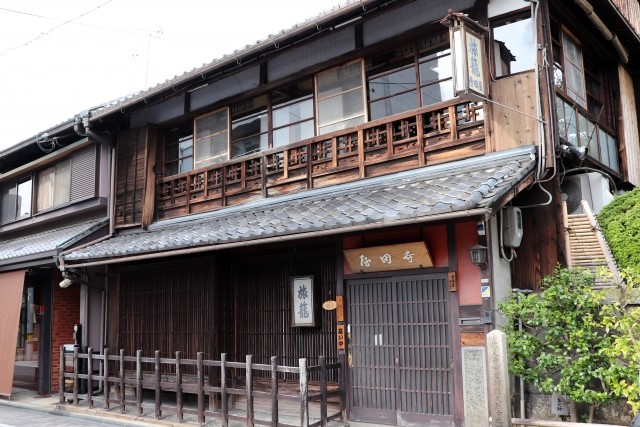
Instagram Worthiness:★★★★★
Photography Opportunity: All seasons
Location Information: ▶Map, Hours, Routes
Transportation Information: 32-minute bus ride from Kyoto Station
Kinkakuji Temple
Kinkakuji, also known as the Golden Pavilion, is a UNESCO World Heritage Site with over 600 years of history. The temple, officially named Rokuonji, is famous for its glittering golden shariden, which was reconstructed in 1955 after being destroyed by arson in 1950.
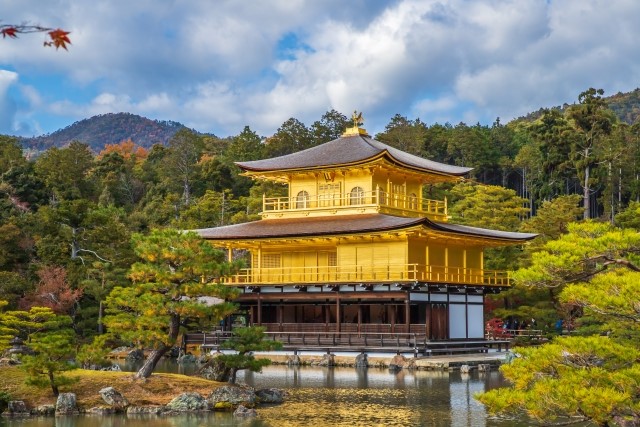
Instagram Worthiness:★★★★★
Photography Opportunity: All seasons
Location Information: ▶Map, Hours, Routes
Transportation Information: 11-minute bus ride from Kitaoji Station
Arashiyama
Arashiyama Park, located at the entrance of Arashiyama, is known for its cherry blossoms in spring and the scenic Togetsukyo Bridge during the autumn foliage. The 155-meter-long bridge and the surrounding views represent the beauty of Kyoto’s autumn. A light-up event in early December adds to the attraction.
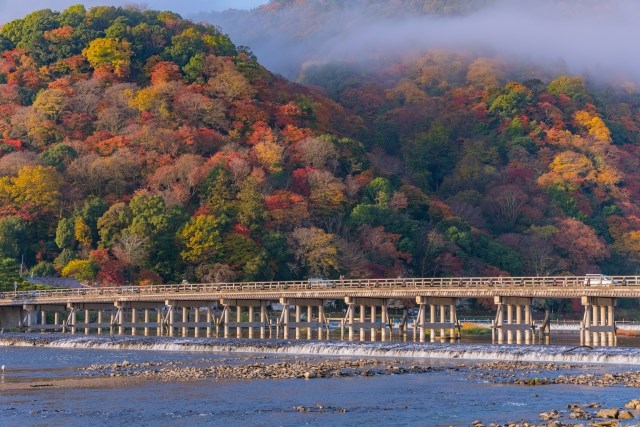
Instagram Worthiness:★★★★★
Photography Opportunity: All seasons
Location Information: ▶Map, Hours, Routes
Transportation Information: 38-minute bus ride from Kyoto Station
Horinji Temple
Founded in 713, Horinji in Arashiyama houses Dendengu, the god of electricity and IT, and is known for its unique SD card amulets. It is also famous for the “Thirteen Visit” ritual for 13-year-old children and the needle memorial service on December 8.
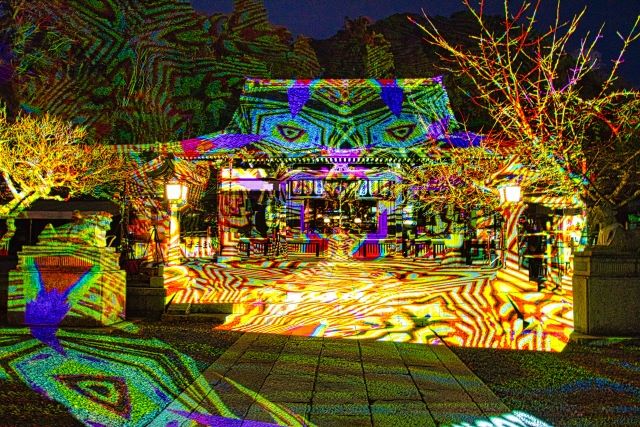
Instagram Worthiness:★★★★★
Photography Opportunity: All seasons
Location Information: ▶Map, Hours, Routes
Transportation Information: 17-minute walk from Saga-Arashiyama Station
Tenryuji Temple
Tenryuji, a World Heritage Site in Saga, was originally the site of an imperial villa before being founded as a Zen temple by Ashikaga Takauji in 1339 to honor Emperor Go-Daigo. The famous ceiling painting “Unryu-zu” is open to the public on weekends and holidays during special seasons. The Sogenchi Garden, a pond-strolling garden, is also renowned for its beauty.
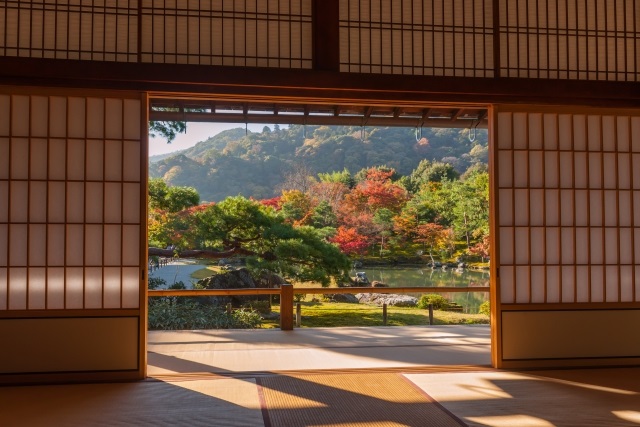
Instagram Worthiness:★★★★★
Photography Opportunity: Spring and autumn
Location Information: ▶Map, Hours, Routes
Transportation Information: 7-minute walk from Saga-Arashiyama Station
Jojakkoji Temple
Located at the foot of Mt. Ogura in Sagano, Jojakkoji is known for its stunning autumn foliage. The “Momiji Tunnel” near the Nio Gate, where fallen leaves cover the ground, is particularly captivating. The temple also offers a panoramic view of Kyoto.
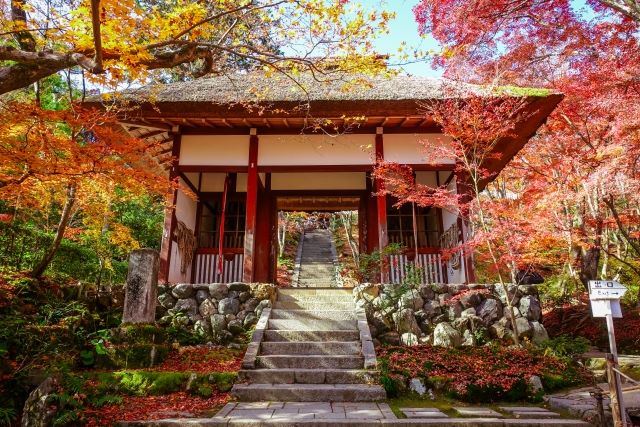
Instagram Worthiness:★★★★★
Photography Opportunity: All seasons
Location Information: ▶Map, Hours, Routes
Transportation Information: 18-minute walk from Saga-Arashiyama Station
Ryoanji Temple
Ryoanji, a UNESCO World Heritage Site, is a serene Zen temple famous for its rock garden. The garden, designed with gravel and stones, embodies Zen principles and remains a mystery regarding its creator and purpose, captivating visitors, including Queen Elizabeth.
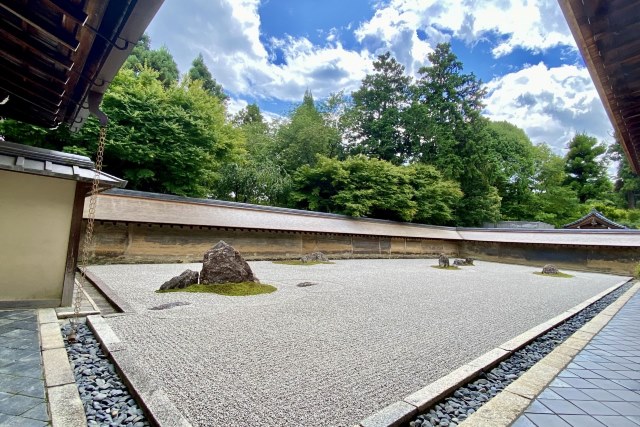
Instagram Worthiness:★★★★★
Photography Opportunity: All seasons
Location Information: ▶Map, Hours, Routes
Transportation Information: 9-minute bus ride from Enmachi Station
Ninnaji Temple
Ninnaji, a UNESCO World Heritage Site, has deep ties to the imperial family from the Heian period to the early Meiji era and is known as Omuro. Its Omuro cherry trees, blooming from mid to late April, are popular among locals for their low height and historical significance.
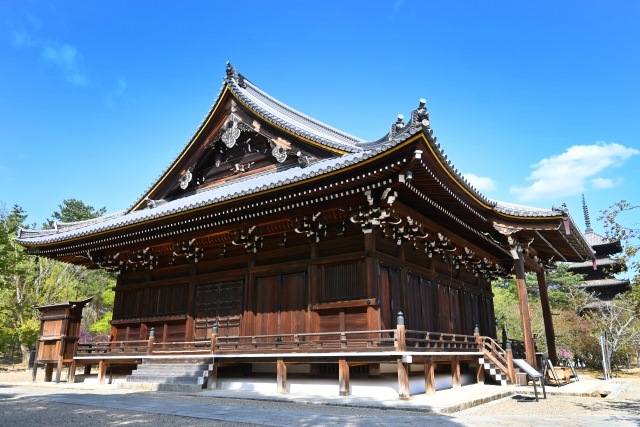
Instagram Worthiness:★★★★★
Photography Opportunity: All seasons
Location Information: ▶Map, Hours, Routes
Transportation Information: 12-minute bus ride from Enmachi Station
Bamboo Grove Path
The Bamboo Grove Path, as famous as the Togetsukyo Bridge in Arashiyama, stretches from Nonomiya Shrine to Tenryuji Temple and the Okochi Sanso Garden. The towering bamboo creates a breathtaking scene, especially when paired with autumn foliage. Renting a kimono or yukata and exploring by rickshaw is highly recommended.
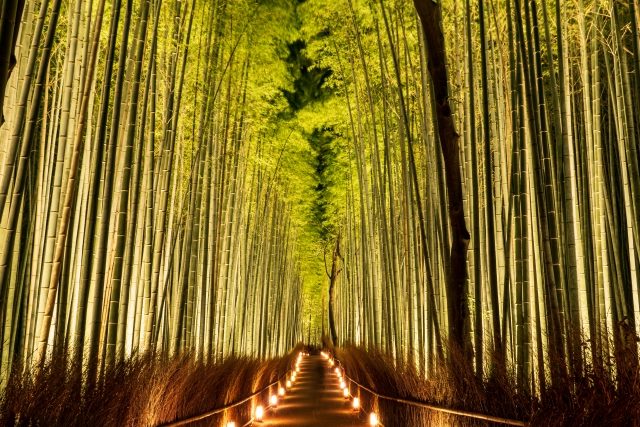
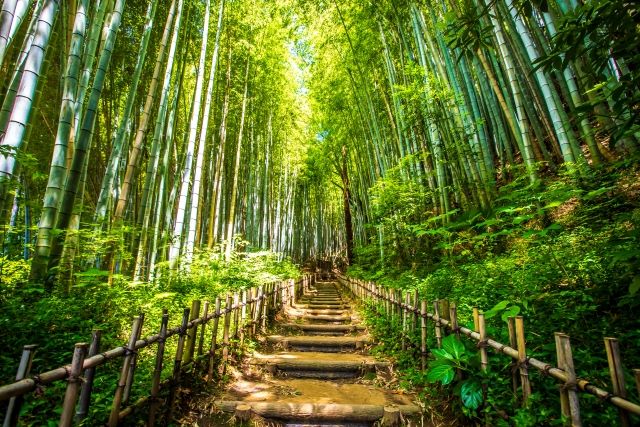
Instagram Worthiness:★★★★★
Photography Opportunity: All seasons
Location Information: ▶Map, Hours, Routes
Transportation Information: 13-minute walk from Saga-Arashiyama Station
Kimono Forest
Arashiyama Station on the Keifuku Electric Railroad has transformed into the stylish “Kimono Forest,” featuring around 600 poles wrapped in vibrant Kyoyuzen fabric. This eye-catching installation, created by Kamedatomi Dye Factory, features 15 different patterns in various colors and is a perfect place for kimono-clad strolls.
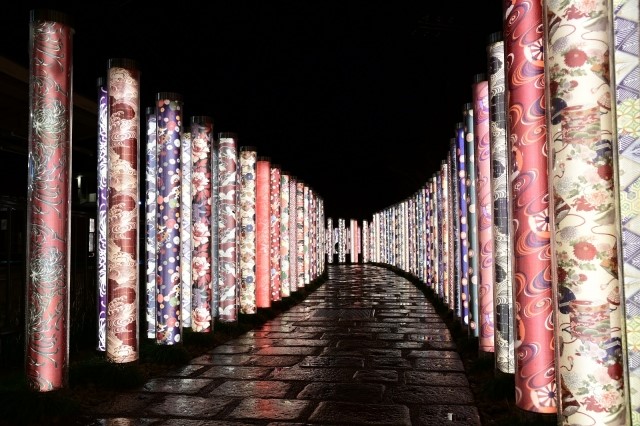
Instagram Worthiness:★★★★★
Photography Opportunity: All seasons
Location Information: ▶Map, Hours, Routes
Transportation Information: 8-minute walk from Saga-Arashiyama Station
Amanohashidate
Amanohashidate, one of Japan’s three scenic views, is located in Miyazu Bay in northern Kyoto Prefecture. The unique sandbar stretches 3.6 km long and is 20–170 meters wide, covered with about 6,700 pine trees. Visitors can enjoy the view from observatories, walk, bike, or take a boat ride, and swim at the beach.
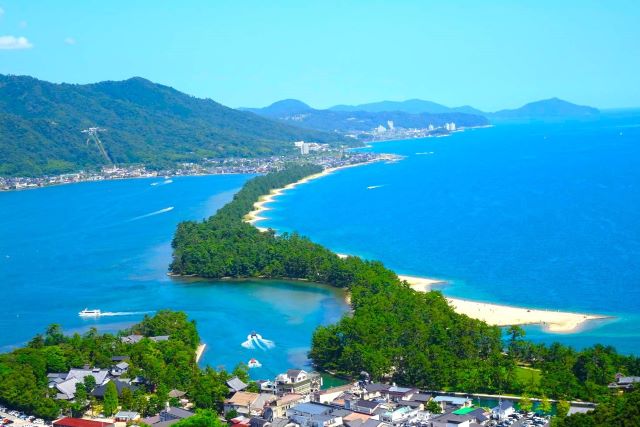
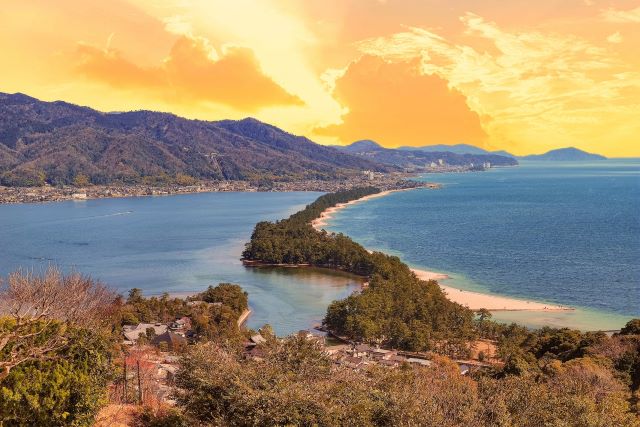
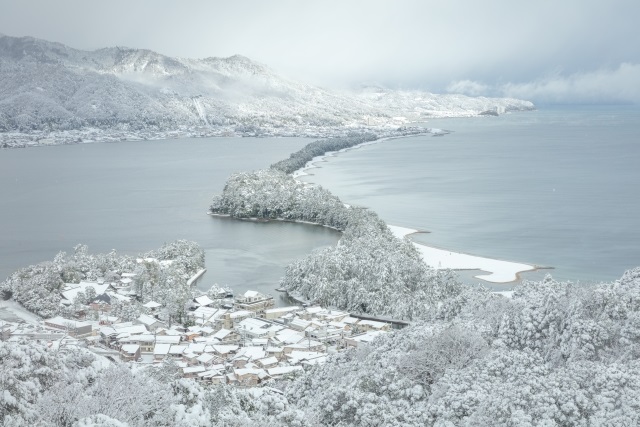
Instagram Worthiness:★★★★★
Photography Opportunity: All seasons
Location Information: ▶Map, Hours, Routes
Transportation Information: 7-minute walk from Amanohashidate Station
Amanohashidate View Land
Amanohashidate View Land, located on Mt. Monju, offers a panoramic view of Amanohashidate from the south. The view is often described as a “flying dragon” when seen through one’s legs, hence the name “Hiryukan.” The park also features a Ferris wheel and cycle cars, catering to visitors of all ages. A great recommendation is to enjoy the view from the park, then bike through the pine forest.
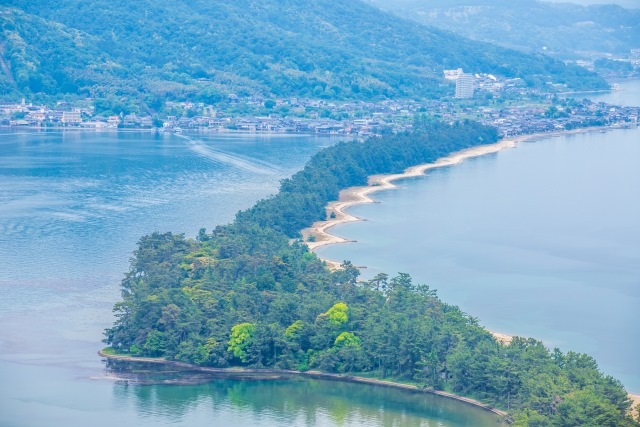
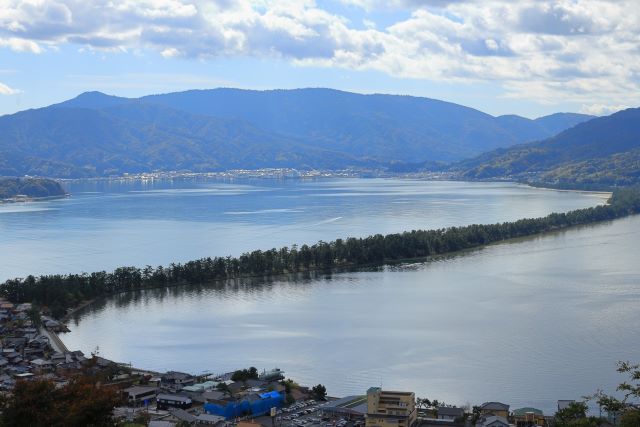
Instagram Worthiness:★★★★★
Photography Opportunity: All seasons
Location Information: ▶Map, Hours, Routes
Transportation Information: 5-minute walk from Amanohashidate Station
Amanohashidate Shrine
Located within the pine forest of Amanohashidate, this small shrine is a popular starting point for shrine visits, particularly for its reputed blessings in romance.
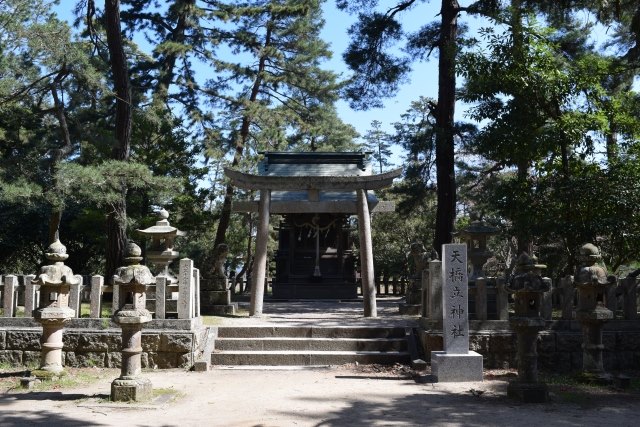
Instagram Worthiness:★★★★★
Photography Opportunity: All seasons
Location Information: ▶Map, Hours, Routes
Transportation Information: 14-minute walk from Amanohashidate Station
Ine’s Funaya Houses
Ine Bay is home to about 230 Funaya (boat houses), recognized as an Important Preservation District for Groups of Traditional Buildings. The Funaya structures have boat storage on the first floor and living quarters above. Access from Amanohashidate Station by bus (1 hour) is available. A boat tour offers a unique view of the houses from the sea, where seagulls gather for feeding, entertaining the passengers. Walking through Ine offers a different perspective, showcasing the practical living aspects of these historic structures. Ine is protected by a bay and island, making it a safe and excellent fishing ground.
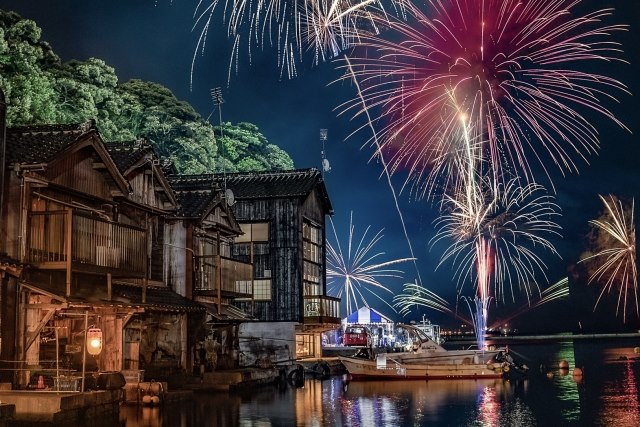
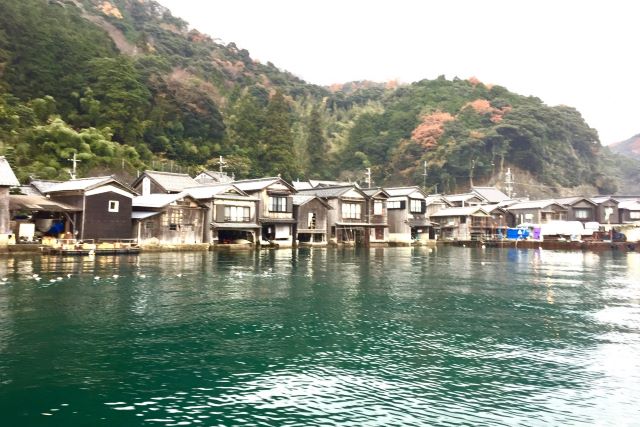
Instagram Worthiness:★★★★★
Photography Opportunity: All seasons
Location Information: ▶Map, Hours, Routes
Transportation Information:1-hour bus ride from Amanohashidate Station


